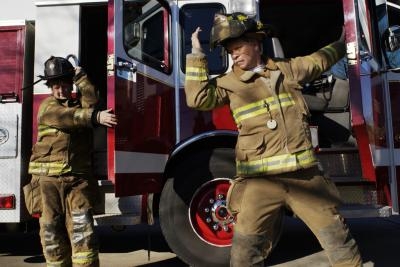
Persons wishing to operate a straight vehicle with a gross vehicle weight rating of 26,001 lbs. or more are required to obtain a Class B commercial driver's license, or a CDL-B.
When applying for a Class B CDL, a pre-trip inspection test is part of the exam. Once the licensee is employed, however it's not the end of the pre-trip inspections. Federal regulations require drivers to prepare written inspection reports daily, and the motor carrier must keep them on file for at least three months.
First on the inspection checklist is the engine, it's mechanical components and fluids. Begin the vehicle inspection with the engine off. Look for puddles and leaks under the engine and transmission. Inspect hoses and reservoirs for leaks and condition.
While the engine is still off, check the engine oil, power steering fluid, radiator coolant level and the belts. Inspect the belts for cracks, frays and correct adjustment.
Sit in the driver's seat. Check the clutch and gearshift by depressing the clutch and placing the gearshift lever in neutral and start the engine. Slowly release the clutch. The vehicle shouldn't move.
As the engine is running, inspect the ammeter, coolant temperature, and air- and oil-pressure gauges for proper function and operating ranges.
While sitting in the driver's seat, test the steering for excessive play by turning the wheel back and forth. A 20-inch steering wheel should not move more than two inches. Inspect the windshield, mirrors, windshield wipers, heater/defroster and seat belt while sitting inside as well.
While sitting in the cab, test the dash lights and the indicators for the turn signals, four-way emergency flashers, high beams and anti-lock brake system, and blow the horn.
Afterwards, turn on the emergency flashers and exit the cab of the vehicle. Walk around and inspect the lights for cleanliness and function. Also, check the reflectors, clearance lights, and reflecting tape condition. Check turn signals and brake lights separate from emergency flashers.
While inspecting the lights and reflectors, examine the exterior of the vehicle. The exterior inspection consists of examining the steering box, hoses and linkage, leaf springs, coil springs, and shock absorbers and mounts. Look for cracked components, loose bolts and nuts, leaks and damaged hoses.
Additionally, look for body damage, loose or missing mud flaps, and missing parts, such as the fuel cap. Examine the tires, wheels and rims for damage, excessive wear, illegal welds and loose or missing lug nuts.
The brake inspection varies with the different types of brakes. The driver must inspect the parking brake, service brakes, hydraulic brakes and air brakes -- where applicable. The air brakes require a series of tests with the engine on as well as off to check pressurization, the low-air warning buzzer and parking brake's effectiveness.
In addition to testing the various brake's function and performance, the components must be visually inspected as well. Look at the brake drums, hoses and lines, brake chambers and linings, and the pushrods and slack adjusters..
Every commercial vehicle requiring a Class B CDL to operate must also have emergency equipment on board. Items include three reflective triangles, six fusees or three liquid flares, a properly charged and rated fire extinguisher, and spare electrical fuses.
During the exam for a Class B CDL, the candidate is required to touch every item he is inspecting for the pre-trip inspection portion of the test. Furthermore, the applicant must describe and explain to the examiner what he is looking for during the pre-trip inspection. Failure to do so will result in a failed exam, so memorizing the required checked items is essential.